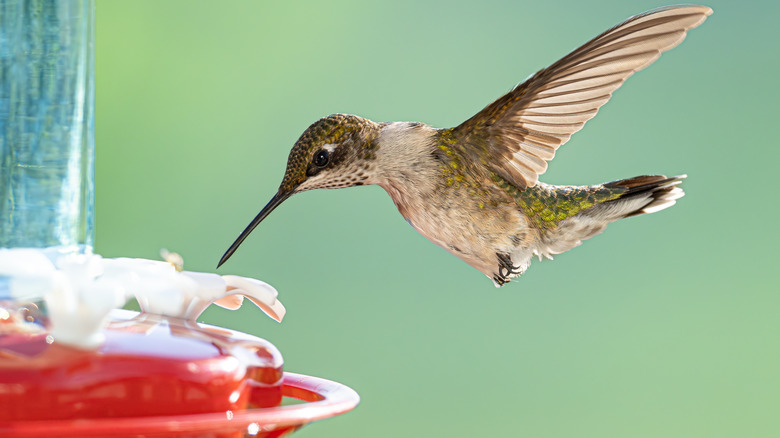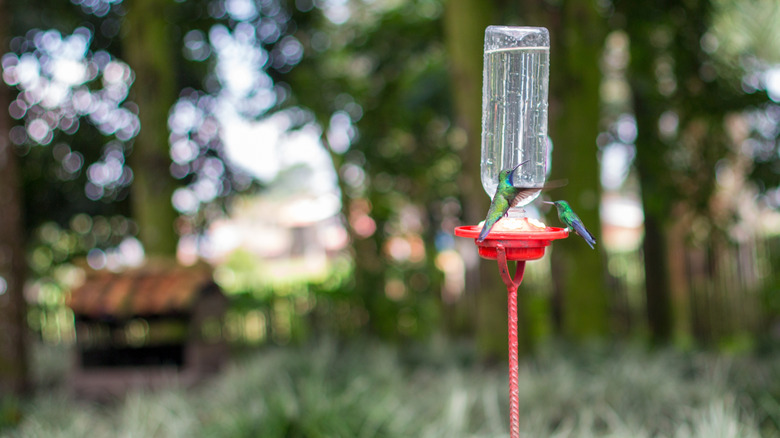The Worst Hummingbird Feeder Mistake You're Probably Making
Feeding hummingbirds in your backyard or garden can be a rewarding experience. Not only does having a feeder in place offer you a possible opportunity to get close to these itsy-bitsy birds, but you will also be helping to support their health and well-being with the food you supply them. However, a common mistake you could make is to feed hummingbirds nectar with red dye, as the artificial substance may harm them. Indeed, red dye is the one thing you should never add to your hummingbird nectar. However, this isn't the only mistake people make when feeding hummingbirds. Perhaps one of the worst hummingbird feeder mistakes is to place it in any spot in your yard or garden without first thinking about the birds' overall safety and accessibility.
When you buy a hummingbird feeder, it's important to consider its ideal placement in your outdoor space. It can be tempting to install the feeder in an aesthetically appealing place, or perhaps in an area where you and your family can easily view them. Neither of these scenarios may necessarily address hummingbirds' safety, though, and you could unintentionally place them in harm's way. Having a feeder out in the open, for example, might make the birds easy targets for predators. Larger birds and dragonflies are among the many hummingbird predators you don't want anywhere near your feeders. At the same time, you'll want to ensure that the feeder is visible to hummingbirds as they zip by your yard or garden.
Ideal placement tips for your hummingbird feeder
While you should never place a hummingbird feeder alone in a wide-open space, you'll still need to find ways to make the feeders visible and accessible to these birds. This can be accomplished by placing the feeder near bushes and trees. Doing so allows hummingbirds to be able to take shelter from predators and adverse weather when necessary in between their feedings. If the birds do not sense they have safe spaces near the feeders, they are unlikely to stick around. Having a red-colored feeder can also help attract hummingbirds to your yard.
Ideally, hummingbird feeders should be placed about 10 to 15 feet from shrubs and trees. Also, as tempting as it might be to have a hummingbird feeder right in front of your window so you can catch them feeding when you're indoors, it's best to maintain space between your home and the feeder. Consider placing the feeder at least 15 to 20 feet away from any windows to keep the birds from accidentally flying into them and hurting themselves. Placing the feeder in a shady spot is also ideal, so the nectar doesn't spoil as quickly, though you may still need to change feeder nectar daily in the summer months. As a final tip, keep in mind that even the perfectly placed hummingbird feeder may not be enough to support these birds, so you might also consider supplying them with nectar-containing plants and a source of water, too.

